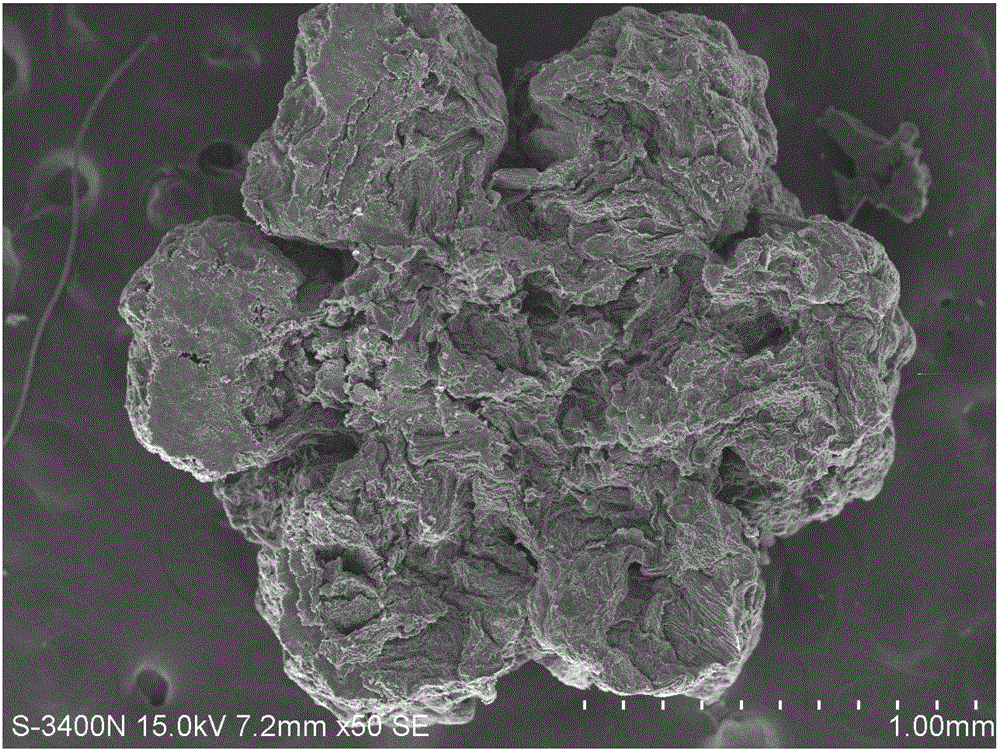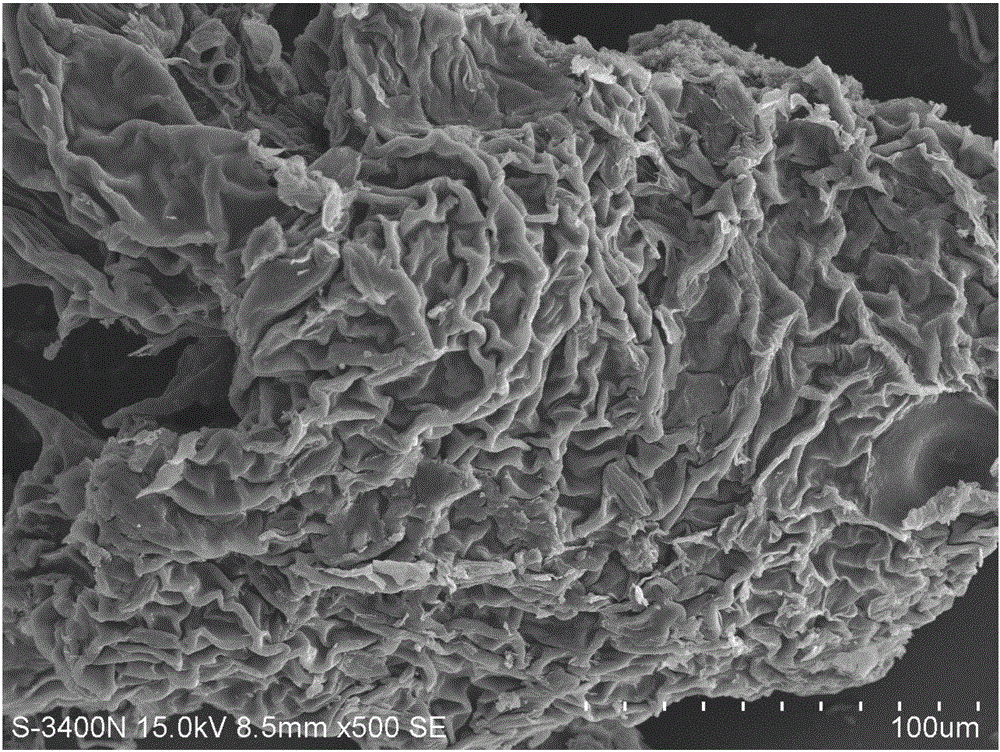High-specific surface silkworm excrement-porous carbon-MOFs composite material prepared through impregnation method and preparation method and application thereof
A high specific surface, composite material technology, applied in the field of carbon materials, can solve the problems of non-target biological damage to the environment, excessive pesticide residues in agricultural products, low pesticide utilization efficiency, etc., to achieve the effect of easy control, convenient operation and high adsorption capacity
- Summary
- Abstract
- Description
- Claims
- Application Information
AI Technical Summary
Problems solved by technology
Method used
Image
Examples
Embodiment 1
[0038] A preparation method of silkworm excrement porous carbon MOFs composite material with high specific surface impregnation method, comprising the following steps,
[0039](1) Mix and swell the original silkworm excrement and deionized water according to the mass-to-body ratio of 1:100. After swelling at 30°C for 3.0 hours, remove the silkworm excrement and freeze-dry it. First, freeze and pretreat at -20°C for 4 hours. Then lower the temperature to -60° C. and freeze-dry for 24 hours to obtain freeze-dried silkworm excrement.
[0040] (2) freeze-dried silkworm excrement in N 2 In the atmosphere, the temperature was raised to 300°C at a rate of 5°C / min, and kept at 300°C for 5.0h to carry out the pore expansion reaction. After naturally cooling down to room temperature, the obtained solid was dissolved in 1mol / L HCl to clean the material, and then Wash with deionized water to pH ≈ 7, then centrifuge, place in an oven to dry overnight, and obtain the silkworm excrement-bas...
Embodiment 2
[0045] (1) Mix and swell the original silkworm excrement and deionized water according to the mass-to-body ratio of 1:120. After swelling at 35°C for 2.5 hours, remove the silkworm excrement and freeze-dry it. First, freeze it at -20°C for 3 hours. Then lower the temperature to -55° C. and freeze-dry for 36 hours to obtain freeze-dried silkworm excrement.
[0046] (2) Raise the freeze-dried silkworm excrement to 350°C at a heating rate of 5°C / min in an Ar atmosphere, and keep it at 350°C for 4.0h to carry out the pore expansion reaction. After naturally cooling down to room temperature, dissolve the obtained solid Wash the material in 1mol / L HCl, then use deionized water to wash to pH ≈ 7, then centrifuge, place in an oven to dry overnight, and obtain silkworm excrement-based hierarchical porous carbon material after drying.
[0047] (3) Combine the silkworm excrement-based hierarchical porous carbon material with 1.0mol / L Fe 2 (NO 3 ) 3 The solution was shaken and mixed ac...
Embodiment 3
[0051] (1) Mix and swell the original silkworm excrement and deionized water according to the plastid ratio of 1:140, swell at 40°C for 2.0 hours, remove the silkworm excrement and freeze-dry it, and first freeze and pretreat it at -25°C for 2 hours, Then lower the temperature to -50° C. and freeze-dry for 48 hours to obtain freeze-dried silkworm excrement.
[0052] (2) freeze-dried silkworm excrement in N 2 In the atmosphere, the temperature was raised to 400°C at a rate of 5°C / min, and kept at 400°C for 3.0h to carry out the pore expansion reaction. After cooling down to room temperature naturally, the obtained solid was dissolved in 1mol / L HCl to clean the material, and then Wash with deionized water to pH ≈ 7, then centrifuge, place in an oven to dry overnight, and obtain the silkworm excrement-based hierarchical porous carbon material after drying.
[0053] (3) Combine the silkworm excrement-based hierarchical porous carbon material with 1.5mol / L Cu(NO 3 ) 2 The soluti...
PUM
| Property | Measurement | Unit |
|---|---|---|
| Specific surface area | aaaaa | aaaaa |
| Porosity | aaaaa | aaaaa |
Abstract
Description
Claims
Application Information
 Login to View More
Login to View More - R&D
- Intellectual Property
- Life Sciences
- Materials
- Tech Scout
- Unparalleled Data Quality
- Higher Quality Content
- 60% Fewer Hallucinations
Browse by: Latest US Patents, China's latest patents, Technical Efficacy Thesaurus, Application Domain, Technology Topic, Popular Technical Reports.
© 2025 PatSnap. All rights reserved.Legal|Privacy policy|Modern Slavery Act Transparency Statement|Sitemap|About US| Contact US: help@patsnap.com



